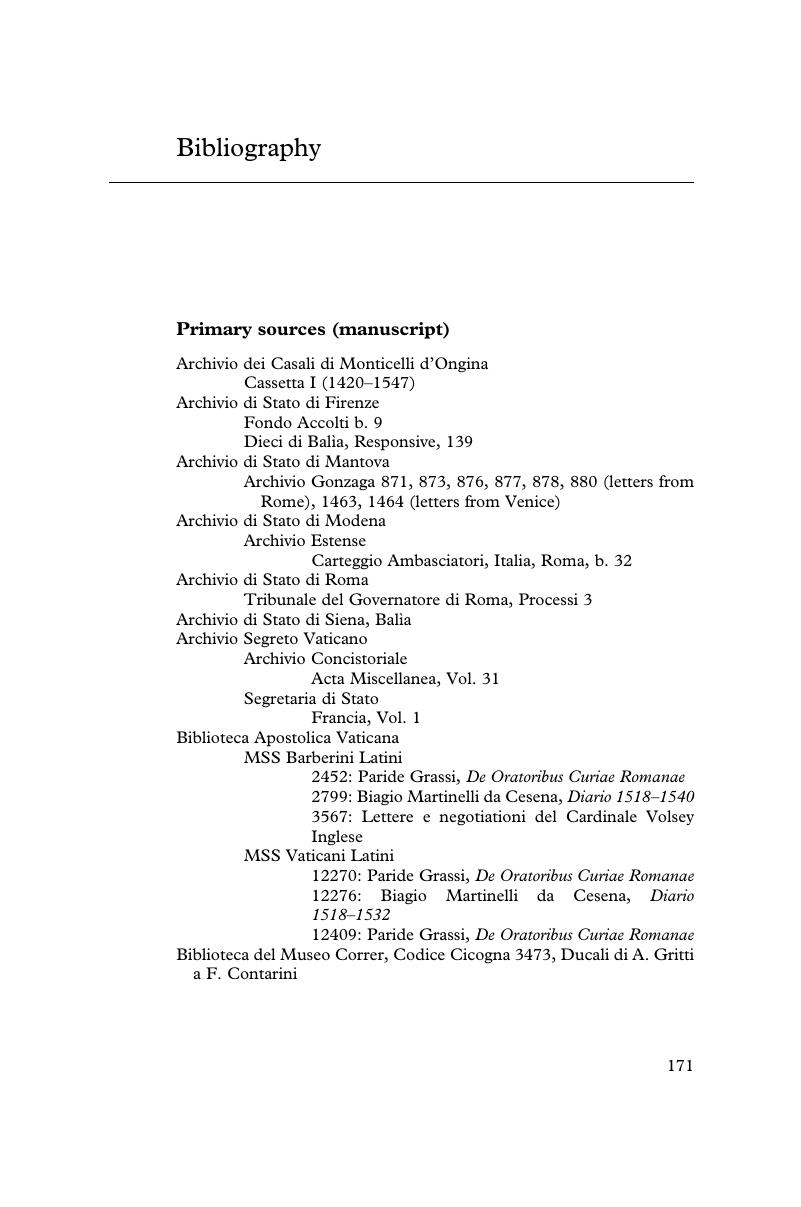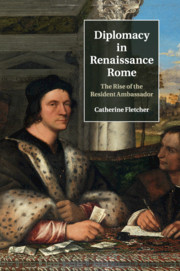Bibliography
Published online by Cambridge University Press: 05 October 2015
Summary

- Type
- Chapter
- Information
- Diplomacy in Renaissance RomeThe Rise of the Resident Ambassador, pp. 171 - 188Publisher: Cambridge University PressPrint publication year: 2015



